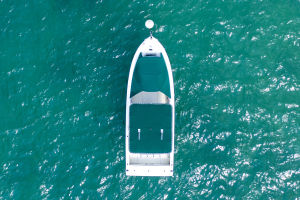Living by the seaside offers the opportunity to witness an array of ships sailing across the horizon.
Amidst this maritime spectacle, one might notice a peculiar occurrence: the discharge of water from the sides of these ships.
This phenomenon, while intriguing, is a common sight, especially among large vessels. Understanding its significance sheds light on the intricate workings of maritime engineering.
Indeed, not all ships engage in this practice of drainage. Typically, it is the large vessels that do so, while smaller boats and yachts often do not. The rationale behind this discrepancy lies in the structural complexity of these vessels.
Small boats and yachts, with their simpler designs and modest propulsion systems, do not require such elaborate mechanisms for water drainage.
Contrastingly, large ships boast multifaceted structures and powerful engines. Take, for instance, the Nook-Nevis, hailed as the largest ship in the world. With a length twice that of the Titanic and a displacement exceeding that of the U.S. Ford aircraft carrier by eightfold, it rightfully earns the moniker "Sea Giant."
This super cruise ship, originating from Singapore, epitomizes the grandeur and complexity of modern maritime engineering.
The Nook-Nevis's staggering displacement of 820,000 tons dwarfs even formidable vessels like China's Liaoning aircraft carrier, which clocks in at 60,000 tons at full displacement. The sheer magnitude of the Nook-Nevis's size is awe-inspiring.
However, such colossal feats come with considerable investment and maintenance costs. Upon its acquisition by Norway's Norman International Shipping Company in 1989 for $35 million, extensive restoration work commenced at a Singaporean shipyard, totaling a staggering $60 million—a price surpassing the initial purchase cost.
Despite its remarkable stature, the fate of the Nook-Nevis ultimately succumbed to the inevitable. In 2009, the vessel was sold to India's shipbreaking industry, meeting its demise in 2010. The dismantling of this maritime behemoth evokes a sense of melancholy, considering its immense potential and historical significance.
Nevertheless, the Nook-Nevis epitomizes the necessity for water drainage mechanisms on large ships. This need arises primarily from the operation of their engines. Large ships, unlike smaller vessels, typically rely on high-power diesel engines. While potent, these engines generate substantial heat during operation.
The accumulation of heat poses a grave risk, potentially leading to engine malfunctions, explosions, or even fires. To mitigate this danger, efficient cooling systems are indispensable. Water serves as a primary coolant, circulating through the engines to dissipate heat effectively.
The process of draining water from the sides of the ship facilitates this cooling mechanism, ensuring optimal engine performance and maritime safety.
In essence, the discharge of water from large ships serves a crucial purpose beyond mere spectacle. It symbolizes the intricate dance between engineering innovation and maritime pragmatism. By maintaining the delicate balance of heat dissipation, these vessels navigate the seas with precision and reliability, underscoring the remarkable synergy between man and machine on the high seas.
Beyond cooling engines, water drainage plays a pivotal role in maintaining stability and buoyancy.
Large ships, with their massive hulls and cargo capacities, must contend with the constant ebb and flow of ocean currents. By expelling excess water, these vessels regulate their weight distribution, preventing imbalance and ensuring smooth sailing.
Drainage systems facilitate the removal of seawater that may infiltrate the ship during inclement weather or rough seas.


